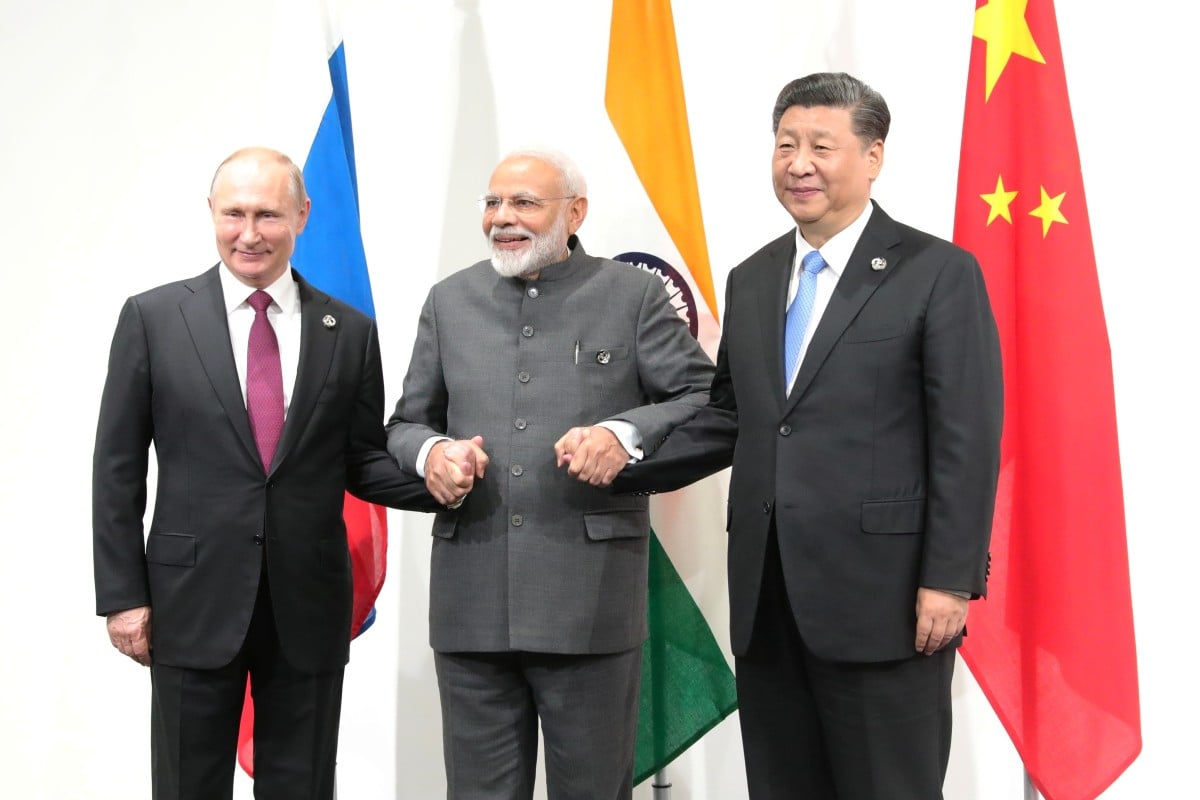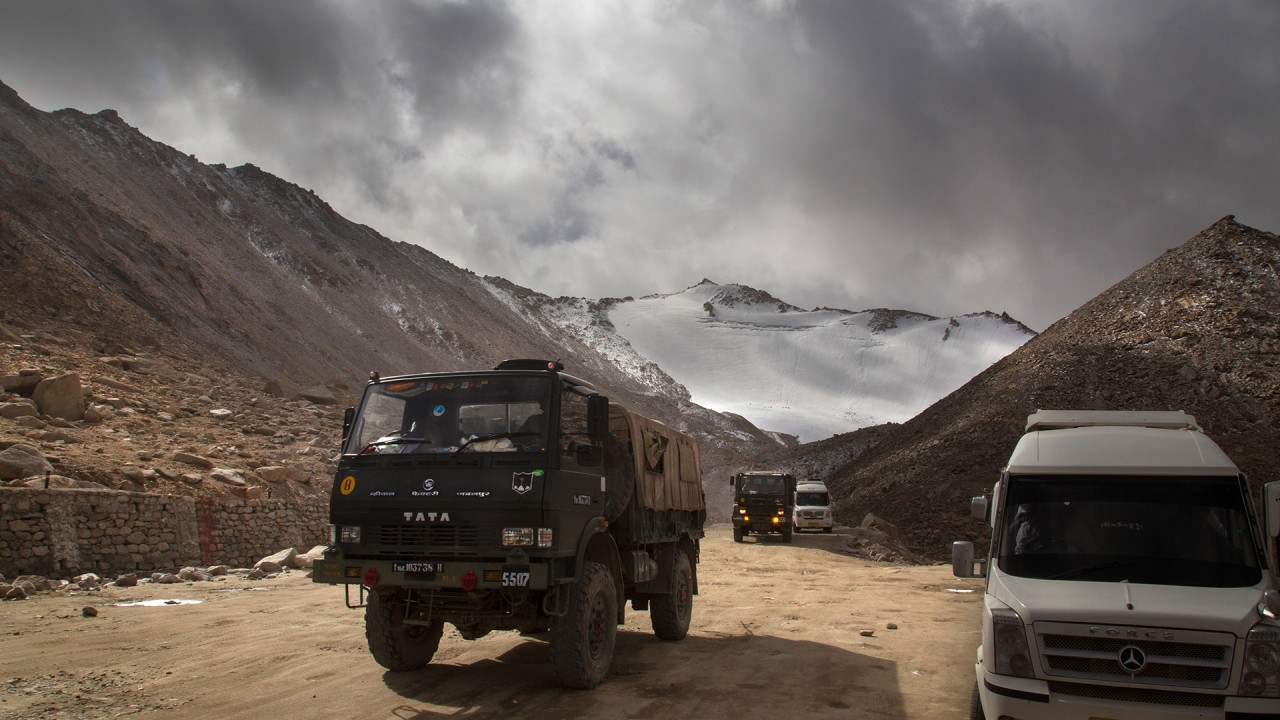Danil Bochkov
 The rise in tensions along the China-India border in the Himalayas began in early May and resulted in bloodshed earlier this month with violence in the Galwan valley. This border stand-off bears similarities to the skirmish in 2017, with the only exception being a lack of fatalities three years ago.
The rise in tensions along the China-India border in the Himalayas began in early May and resulted in bloodshed earlier this month with violence in the Galwan valley. This border stand-off bears similarities to the skirmish in 2017, with the only exception being a lack of fatalities three years ago.
The intensification of this dispute has spurred concern among Nepal, Japan and other regional players who have to balance their foreign policy between China and India. It has also drawn the attention of larger powers such as the United States and Russia, with the former offering mediation but to no avail.
China and India’s current impasse poses a huge political challenge for Russia, which has established long-term strategic ties with both countries.
Russia-India relations are officially described as a “special and privileged strategic partnership”, a formula that was originally promulgated during President Vladimir Putin’s official visit to India in 2010. The special nature of their bilateral relations has been underscored several times in recent years, such as Putin’s 2018 state visit to India and a 2019 meeting between Foreign Minister Sergey Lavrov and his Indian counterpart Subrahmanyam Jaishankar. The two sides adopted “India-Russia: an Enduring Partnership in a Changing World”, a 2018 joint statement in which they recognised the importance of adjusting relations in a new global reality.
Russia and China upgraded their relations last year to a “comprehensive strategic partnership of coordination for a new era”. Some have seen this as evidence of both countries’ desire to reshape the nature of their bilateral relations amid new challenges and the intensification of global geostrategic competition with the US.


Three Indian soldiers killed in border clash with Chinese troops
Three Indian soldiers killed in border clash with Chinese troops From an economic perspective, the US$11 billion in trade between Russia and India in 2019 pales in comparison to the US$110 billion between Russia and China. However, India is seeing a burgeoning relationship with Russia through arms sales. It regularly buys a wide range of Russian weapons, including the high-end S-300 and S-400 “Triumph” air defence systems and MiG-29 and Sukhoi Su-30 fighter jets.
China is more advanced than India in producing military hardware with its Chengdu J-20 fighter jet and HQ-9 air defence system. In terms of cutting-edge defence technology, though, China is another long-standing client for the Russian arms industry. It signed a contract of US$2.5 billion in 2015 for delivery of the fourth-generation Su-35 fighter jet, and it has also bought Russia’s S-400 surface-to-air missile system.
Stockholm International Peace Research Institute study shows India and China as by far the leading buyers of Russian arms from 2015 to 2019, with India accounting for 25 per cent of Russian exports and China 16 per cent. In that same period, Russia supplied 56 per cent of India’s total arms imports.
Of the 13 foreign contingents that took part in the Red Square military parade on June 24, only four – India, China, Mongolia and Serbia – were not from former Soviet republics. This and the statistics above speak to the strategic character of Russia-India and Russia-China relations.
While Russia recognises the complexity of China-India relations, it has made sure to adhere to the principle of multilateral cooperation. It is inclined to harmoniously develop its relations with both countries and avoid any imprudent moves. Russia could be a better intermediary than the US given its positive relations with India and China, but it has not done so and instead opted to prevent any ambiguous interpretations of its motives from Delhi or Beijing.
This is evidenced by Russia’s continued advocacy of the importance of trilateral discussions while stressing that disagreements between India and China not become part of the meetings’ agenda. Amid the current border tensions, Lavrov has stressed that China and India do not need help in resolving their issues. After India and Pakistan joined the
Shanghai Cooperation Organisation in 2017, none of their border disputes have led to diplomatic gridlock within the group.
Russia values India and China as important diplomatic partners, with relations with China flourishing in recent years. Even so, Russia does not necessarily want to put relations with India on a par with Chinese relations. This is not a matter of who is closer to Russia. While Russia and China share a common vision of global order, India is pursuing a diversified strategy and trying to balance relations with powers such as the US, China and Russia.
The value Russia places on its relations with India and China is shown by the mention in the latest Foreign Policy Concept of the Russian Federation of trilateral talks among other important platforms for cooperation with Russian partners. The three countries reiterated the close nature of their cooperation within the SCO, BRICS and the United Nations during
During that meeting, Lavrov noted that all three participants expressed concern over some states trying to revise the basics of global security established after 1945. He also said they discussed reforming the UN Security Council by adding more members and that Russia considered India one of the most fitting candidates for inclusion.
Russia regards India and China as autonomous powers, and while it welcomes Chinese participation in New Start talks, it does not insist on it. Russia opts to stay out of the border tensions between India and China without lending support to either side. This strategy dovetails with Russia’s interests in forging diversified political contacts amid intensifying cold war rhetoric from the US. It shows Russia is not a “junior partner” of China as some think; otherwise, it would blindly support China’s position on the issues.
Danil Bochkov is an expert at the Russian International Affairs Council
No comments:
Post a Comment